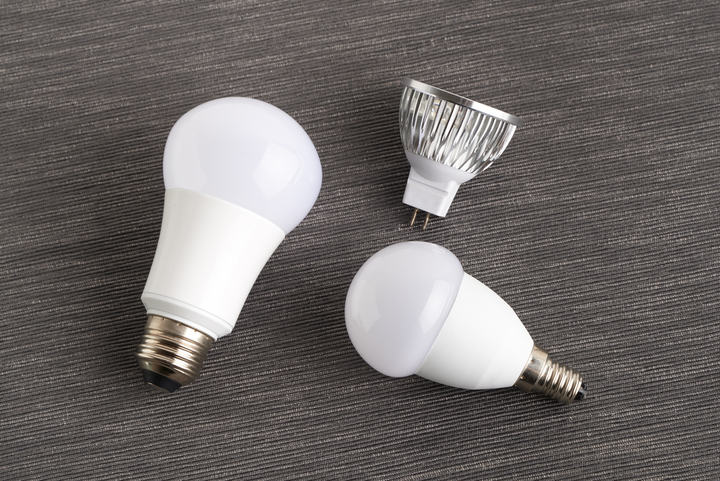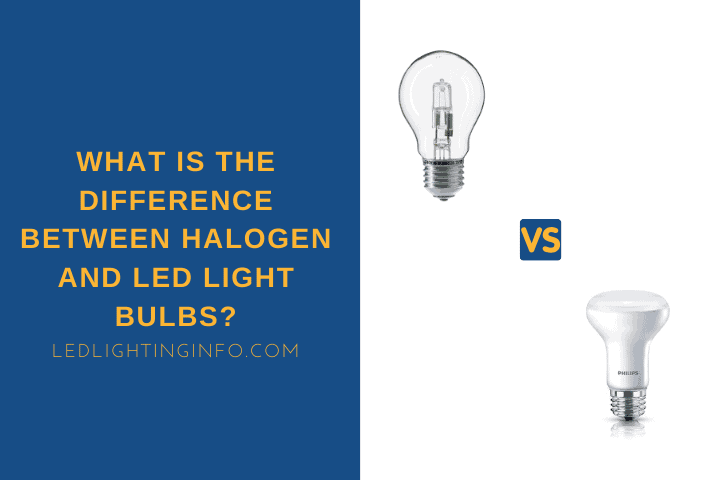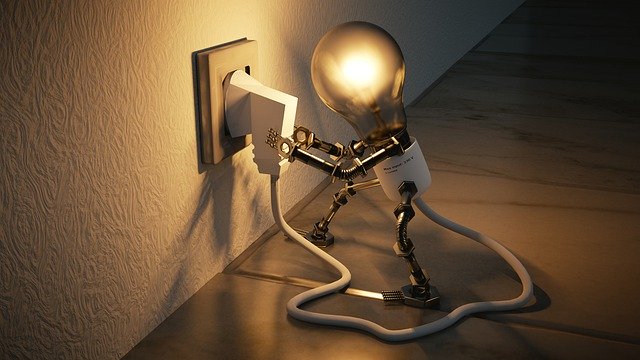You swear there’s something about halogen bulbs that always draw you to them.
Hold that thought.
Traditional incandescent bulbs have been phased out across the globe, attention has turned to their successors: halogens.
After brightening our homes for the last 60 years, are halogen bulbs next to be eliminated?
Halogen bulbs consume more power, heat up quickly compared to LEDs, and give off a fixed color temperature. LEDs have a lumen per watt ratio of 80-100 lm/W, compared to 16-24 lm/W for halogens. This means that LEDs emit much more light using much less energy.
How Do Halogen Bulbs Work Compared To LED?

Let’s look at the fundamental differences between a halogen and an LED bulb.
Arguably, a halogen bulb is a more efficient replacement for the old incandescents. These bulbs have a tungsten filament that heats up when current is passed through it and becomes white-hot, emitting heat and light.
Specifically, a halogen bulb has compressed halogen gas in a capsule within the bulb’s body. This gas helps to improve efficiency in a series of ways.
In an incandescent, the filament heated up so much that the metal disintegrated throughout the bulb’s lifespan.
In the process, a carbon buildup was deposited on the bulb’s casing. This significantly reduced the lifespan of the bulb.
Introducing the halogen gas in proximity to the tungsten filament, recycled some tungsten back to the filament, and prevented this carbon buildup.
This has dramatically increased the bulb’s lifespan, giving up to 2000 – 4000 more hours.
On the other hand, an LED works electronically. An LED functions as a computer, whereby it has a binary on and off state.
The technology is more advanced and uses electronic chips installed at the base of the bulb.
If you’ve ever wondered how exactly an LED gives light, read on for a short, sweet, and technical overview.
The LED, or light-emitting diode, is a semiconductor that controls the amount of electricity that flows through it. At the heart of the diode is a p-n junction, of which electrons jump across and, in the process, change their state.
The extra energy released as electrons changes their state causes photons to be emitted.
These photons then interact with the other materials used in the LED and the current running through it to give off visible light! And that’s LED tech in a nutshell.
LED vs Halogen: Which Is Brighter?

So how do these differences play out when it comes to brightness? Sadly, it isn’t a straightforward comparison.
In the past, wattage and brightness were directly correlated. The higher a bulb’s wattage, the brighter it would be.
Wattage is no longer a relevant measure of brightness. The introduction of LEDs disrupted this relationship.
It is lumens that accurately and objectively indicates how bright a bulb will be.
As a highly efficient light source, an LED can replicate a halogens 40 watts of light using just 10 watts of energy.
In other words, a 30-watt LED will be much brighter than a 30-watt halogen.
So it’s clear that the relationship between wattage and brightness is no longer linear.
But why is this?
If you’ve ever touched a lit halogen bulb, I’m sure you’ll know that they get very hot. In fact, halogens waste 80% of their energy as heat, with only 20% being used to create light.
With LEDs, the complete opposite is true. They use 80% of their energy as light, and the other 20% escapes as heat.
Back to the question at hand, it became clear that a new yardstick for measuring brightness was needed. Introducing… lumens! Lumens are a measure of the total amount of visible light emitted by a light source.
The higher the lumen rating, the brighter the bulb will be.
An 18w halogen bulb emits around 220 lumens, while an 18w LED bulb outputs 1300.
It’s safe to say there’s a clear winner!
On average, LEDs have a lumen per watt measure of 80-100 lm/W. Halogens, whereas, typically have a lumen per watt measure of 16-24 lm/W.
Before going deeper into a halogen bulb’s functionality, you should know that the color temperature (CCT) of a bulb tells you the warmth or coolness of white light.
When it comes to color temperature, halogens are fixed at around 3000 degrees Kelvins, a warm yellowish tone similar to that of a 2700K incandescent bulb.
Since LEDs are available in a range of brightnesses and colour temperature, they’re much more customizable than halogens. This means it’s easier to find a bulb that fits your exact needs.
They come in 2000K as soft warm white, in 4000K as neutral pure white light and up to 6000K as cool bluish white.
What’s more, LEDs reach full brightness immediately after being turned on and are unaffected by frequent cycling. That is, unlike halogens, they can be switched on and off for short periods.
Ultimately this means that as well as being brighter, an LEDs light is also more stable.
Comparison of LED vs Halogen Power Consumption
For halogen and LED bulbs alike, you are now looking out for the specification that states “equivalent wattage.” This is a comparative number that uses an incandescent bulb’s power usage as a baseline standard to indicate how bright an LED or halogen bulb will be.
So if a bulb specifies “60 equivalent watts”, it is not a measure of power usage at all. Instead, it indicates that this bulb will be as bright as a 60 Watt incandescent bulb.
The actual power consumption will be mentioned separately. For example, LEDs may use 8.5 watts, and halogens may use 30 watts of energy to shine as bright as a 60-watt traditional bulb.
With energy-hungry usage like that, it’s no wonder incandescents are no longer very welcome in our homes and offices.
But how about comparing the power consumption in watts between a halogen and an LED, for the same light output in lumens.
An 80-watt halogen and a 17-watt halogen emit the same amount of lumens in an experiment on the video. This halogen bulb used more than 4 times the power used by the LED to produce the same light output.
So what does it mean for you? To personalize this information, check out my neat calculator to put things in perspective for you.
Here, you can plug in the cost of electricity per kWh, the number of bulbs you’ve installed, and how long you use the bulbs during the day.
The calculator will instantly tell you how much money you’re saving if you replace bulbs with different wattages.
Let’s say I am a contractor seeking to bring down my client’s energy usage on his office floor.
If the electricity in my city costs 13 cents per kWh, and the office uses 30 bulbs for 9 hours every day. The calculator tells me my client would save 810 USD per year if I replaced an 80-watt halogen bulb with a 17 watt LED one!
Not a small number at all. Easily, the higher initial price of a quality LED pays itself within a month, adding more running savings throughout the year. For a cherry on the top, an LED doesn’t need to be replaced for years.
It’s savings all around!
Which is Better LED or Halogen Light?
Despite its upgrades and improved efficiency, a red-hot halogen bulb still consumes a lot more power to illuminate than the heating-less technology involved in an LED bulb.
Don’t forget that in addition to increased running costs of halogen bulbs, the heat from the ceiling or fixture with enough halogen bulbs can increase the ambient temperature of the space.
Given enough bulbs in a confined area, such as a small retail store, space will quickly become hot, and you would end up with increased cooling costs to maintain a comfortable temperature.
To add to that, halogen bulbs just don’t have a very long lifespan, as mentioned. You will be replacing them every few years, adding to your troubles and costs.
When it comes to dimming, however, until upgraded and LED compatible dimmers proliferate the market, halogens function better.
They can be easily dimmed by varying the voltage provided across the circuit. LEDs do dim, but not without a few hiccups.
Still, the majority of bulbs sold in the market are halogen bulbs, which are naturally being upended by LEDs as the technology exponentially becomes cheaper, durable, and versatile.
Final Words
By more than one count, it is LEDs that lead the race in the first choice of lighting. The numbers are in front of you, and the decision is yours to make.
What appeals to you most about an LED bulb’s functions?
Does your home or office have halogen bulbs that can be easily replaced with LEDs?
Use the calculator to find out how much you can save by investing in LEDs.
Looking for an LED bulb but not sure what type you need?
Check out my free bulb picker and select the right bulb within few clicks.



